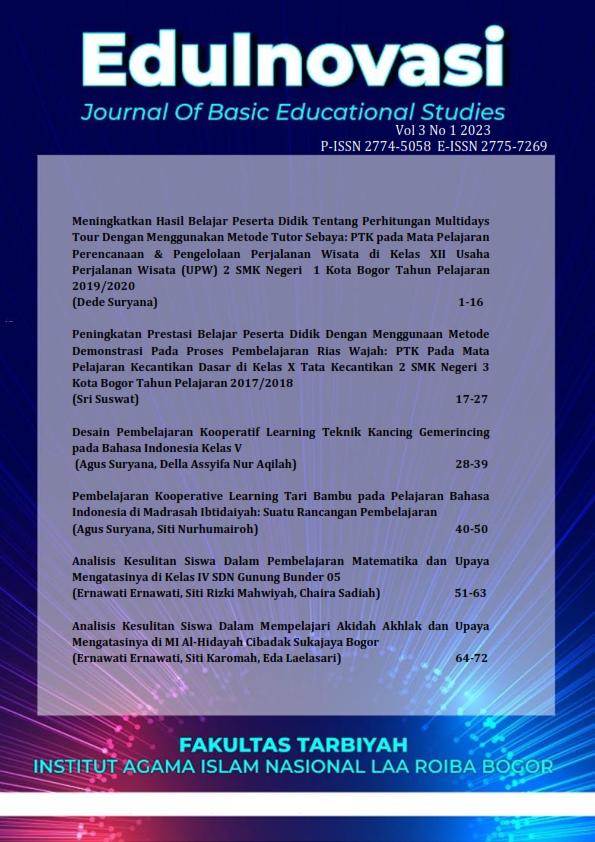Pembelajaran Kooperative Learning Tari Bambu pada Pelajaran Bahasa Indonesia di Madrasah Ibtidaiyah Suatu Rancangan Pembelajaran
Main Article Content
Abstract
This article research aims to: 1. Explain the application of the concept of bamboo dance techniques, 2. Explain the advantages of bamboo dance techniques, 3. Explain the steps in designing bamboo dance techniques in Indonesian lessons. This research method uses the library method by analyzing books and journals related to the application of bamboo dance techniques. The conclusions conclude that: 1. The bamboo dance technique in learning is a technique which is a modification of the Small Circle Big Circle, due to the limitations of classroom space. 2. The advantages of bamboo dance techniques include a. Students can exchange experiences with each other in the learning process. b. Increase cooperation among students. c. Increase tolerance among fellow students. 3. The design steps for implementing the bamboo dance technique include: 1. Learning begins with the introduction of the topic by the teacher. 2. Next, the teacher divides the class into 2 large groups. If there are 40 people in one class, then each large group consists of 20 people. 3. Arrange in such a way in each large group that ten people stand in a row facing each other with 10 other people who are also in a standing position in a row. 4. After the discussion, 20 people from each large group who stood in a row facing each other shifted in a clockwise direction. 5. The results of the discussion in each large group are then presented to the whole class.
Keywords: Cooperative Learning, Bamboo Dance, Indonesian Language.

